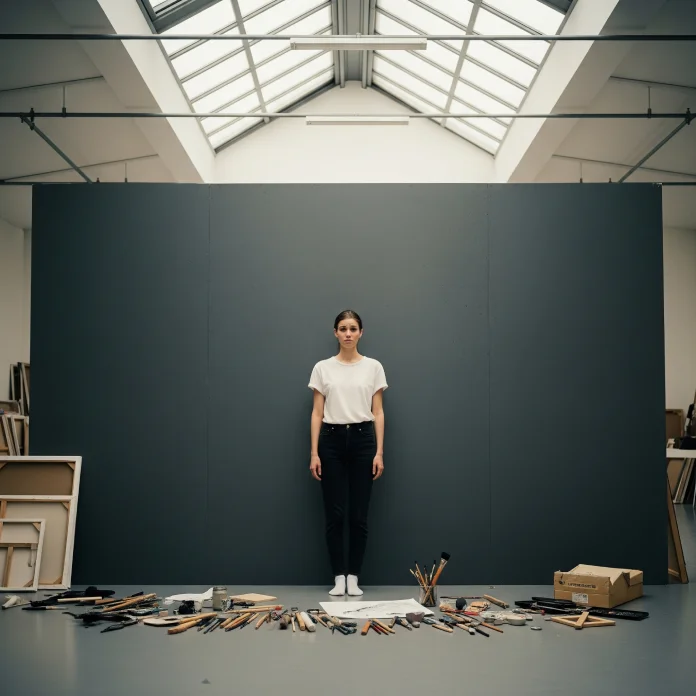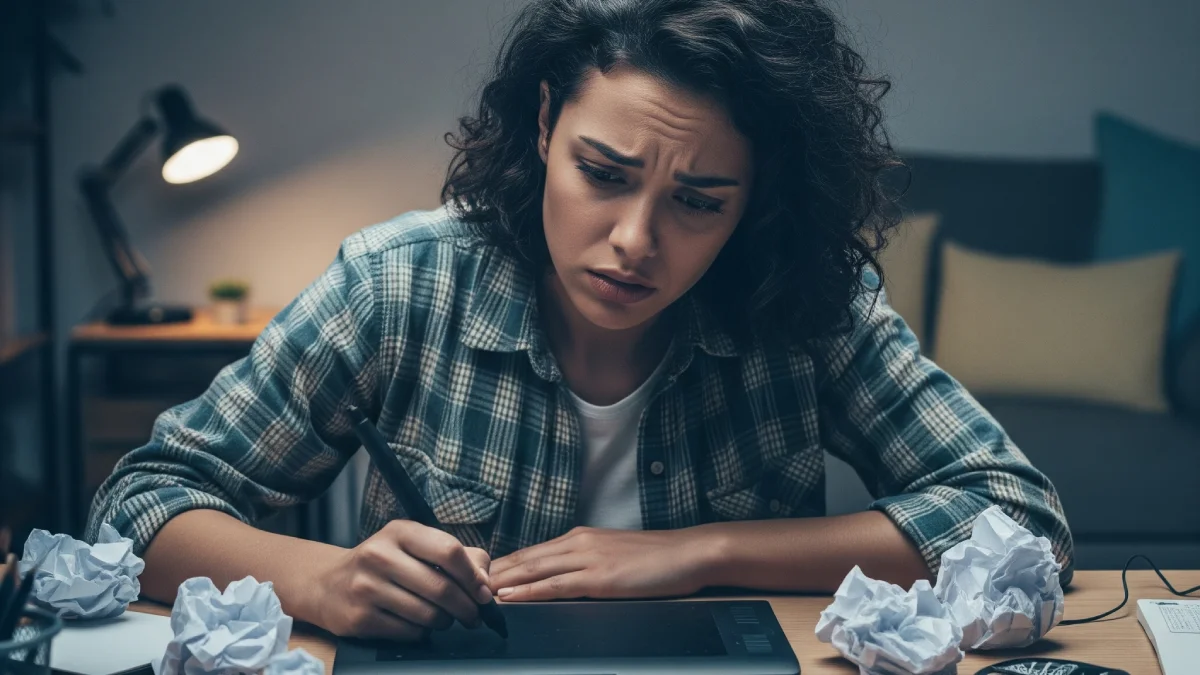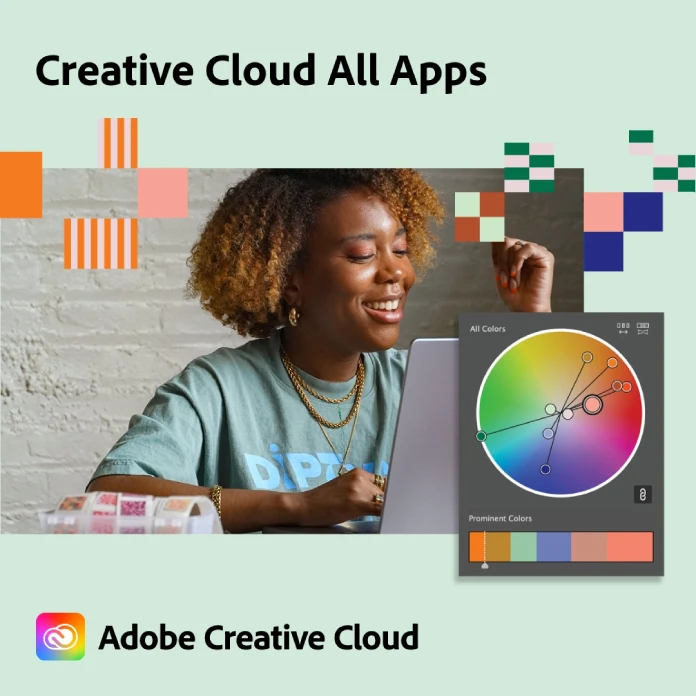Who can relate? You are staring intensely at that blank canvas, the ominously blinking cursor, or a stubbornly empty brainstorming board, feeling that familiar wave of creative dread wash over you. You know that sensation all too well – where those brilliant, game-changing ideas seem light-years away, securely locked behind some invisible, impenetrable barrier. Many creative professionals, just like you, frequently experience these frustrating creative blocks. They can be incredibly disheartening, effectively derailing promising projects and dimming your usually radiant creative spark. This struggle feels particularly acute when your livelihood, your passion, or your next big career move hinges on producing that next great piece of work, that truly innovative solution, or that utterly captivating story. It’s as if your brain, typically a vibrant, buzzing hub of innovation and dynamic creative thinking, suddenly decides to take an unscheduled, extended, and unwelcome vacation, leaving you feeling stranded and grappling with a persistent creative block. But why exactly does this happen so often? Are you simply ‘not feeling it’ today, or are there deeper, more specific, and identifiable reasons for these recurrent creative blocks? You’re definitely not alone in asking this crucial question.
Many creative minds find themselves pondering, ‘Why do I experience creative blocks so often, and more importantly, what can I do about them?’ Understanding the root causes is the vital first step, but knowing how to dismantle them is where the real power lies. This insight into what fuels a creative block and how to overcome it can be truly empowering. Let’s explore the five most common culprits that often sabotage a creative professional’s genius and discover actionable strategies to reclaim your flow. Recognizing these patterns and familiar foes and arming yourself with solutions can be a genuine game-changer in your creative journey. Ready to see what might be holding your unique brilliance hostage and learn how to set it free?

The Perfectionist’s Paradox: When ‘Good Enough’ Isn’t, and Creative Blocks Settle In
Perfectionism. It sounds like such a commendable, almost noble, trait for any dedicated creative professional, doesn’t it? After all, who doesn’t aspire to produce absolutely flawless, truly groundbreaking work? Striving for the absolute best is often what visibly sets great creatives apart from the rest. But here’s the pivotal, self-reflective question: When does that admirable, intense drive for excellence inadvertently cross the invisible line and morph into a significant, debilitating source of creative blocks? This unfortunate transformation often happens when the pervasive fear of not being perfect, of utterly failing to meet those impossibly high standards (which, by the way, are frequently your own internally constructed benchmarks!), becomes so overwhelming that it simply stops you from even starting, leading to a total, immobilizing creative block.
Or, perhaps you do manage to initiate the creative process, but then you find yourself ensnared in an endless, often agonizing, loop of meticulous revisions, painstakingly tweaking minute, often insignificant, details, never truly feeling like your work is ‘done’ or ‘good enough’ to confidently share with the world. This isn’t just about maintaining high standards of quality; it’s frequently rooted in a profound, underlying fear of judgment, a deep-seated worry that your creative output won’t be perceived by others as brilliant, original, or valuable. Many artists experience this particular form of an artist’s block, while writers might call it the dreaded writer’s block – both are punishing manifestations of a deep-seated creative block. You might find your mind racing with critical thoughts like, ‘What if they absolutely hate it?’ or ‘This isn’t nearly as good as my last project,’ or the classic, ‘Is this truly innovative, or just a rehash?’
This kind of intense internal pressure can absolutely stifle productive, creative thinking, effectively halt any attempts at fruitful brainstorming for new ideas, and lead to a frustrating, immovable creative block. Does that internal monologue sound a little too familiar?
Breaking Free from Perfectionism-Induced Creative Blocks:
So, how can you loosen perfectionism’s grip and dissolve these creative blocks?
- Embrace Imperfection as Part of the Process: Give yourself explicit permission to create a “shitty first draft” (as Anne Lamott famously advises). Understand that the initial output doesn’t have to be perfect; it just needs to exist. Iteration is key in creative problem solving.
- Set Realistic Deadlines for ‘Done’: Instead of an open-ended quest for perfection, set clear, achievable deadlines for stages of your project. This forces you to make decisions and move forward, counteracting the paralysis that fuels creative blocks. Define what “good enough” looks like for this specific project.
- Focus on Progress, Not Just Perfection: Shift your internal focus from achieving a flawless final product to celebrating small wins and the progress you make along the way. This reframes the journey and can be a powerful antidote to artist’s blocks or writer’s blocks.
Running on Fumes? How Creative Burnout Fuels More Than Just Tiredness, It Breeds Creative Blocks
Think about your precious creative energy like a high-performance, finely-tuned engine. It absolutely needs quality fuel, consistent regular maintenance, and essential periods of restorative rest to function optimally. What inevitably happens when you’re constantly redlining that engine, relentlessly pushing through a succession of demanding projects, masterfully juggling tight deadlines, and rarely, if ever, stopping to refuel or truly recharge? Eventually, that once powerful engine will undoubtedly sputter, stall, and ultimately grind to a complete halt. This is, in essence, what profound creative burnout feels like, a prime, fertile condition for serious creative blocks to develop and take hold. It’s far more than just feeling a bit tired or run-down after a particularly long and arduous week; it’s a deep, pervasive state of emotional, physical, and mental exhaustion, often triggered by prolonged or excessive stress directly related to your creative endeavors and the relentless pursuit of innovation.
As a dedicated creative professional, the inherent demand to be perpetually ‘on,’ to consistently generate fresh, groundbreaking ideas, and to constantly drive innovation can be immense and, frankly, utterly exhausting over time. When you’re effectively running on empty, completely depleted of your core mental and emotional resources, how can you possibly expect your wellspring of creativity to flow freely and abundantly? Creative blocks become an almost inevitable, predictable consequence in this deeply depleted state. You might start to notice a persistent, nagging lack of motivation, a growingly cynical or detached outlook towards your work or even your entire creative field, or a disheartening, sinking feeling that you simply don’t have any more good ideas left to give – these are all classic, tell-tale signs of an encroaching, serious creative block.
Many creative individuals frequently ask, ‘What are the main reasons for a writer’s block or designer’s block, and burnout consistently ranks high on that list. Recognizing the subtle, early warning signs of burnout is absolutely crucial because simply trying to ‘push through it’ often only serves to dig you deeper into the suffocating grip of the creative block.
Combating Creative Burnout and Its Resulting Creative Blocks:
When burnout is the culprit behind your creative blocks, aggressive action is needed.
- Prioritize Genuine Rest and Disconnection: This isn’t just about getting more sleep. Schedule actual downtime where you completely disconnect from work-related thoughts and activities. Engage in hobbies, spend time in nature, or practice mindfulness. These are ‘tips for dealing with creative burnout’ that truly work.
- Set Healthy Boundaries: Learn to say “no” to projects or commitments that will overextend you, even if they seem exciting. Protect your time and energy fiercely. This is crucial for preventing the cycle that leads to creative blocks.
- Rediscover Your ‘Why’: Reconnect with the initial passion and purpose that drew you to your creative field. Sometimes, reminding yourself of the joy and fulfillment your work can bring (when you’re not depleted) can help reignite your spark and push through creative blocks.
The Inspiration Void: When a Lack of Stimuli Triggers Deep-Seated Creative Blocks
Sometimes, the unwelcome emergence of persistent creative blocks isn’t primarily driven by overwhelming fear or utter, soul-crushing exhaustion, but rather by what feels like a genuine, barren desert of inspiration. Your immediate physical environment, your ingrained daily routines, and the kinds of intellectual and sensory inputs you consistently expose yourself to play a massive role in either nurturing or inadvertently neglecting your precious creative spirit, potentially leading directly to a frustrating and stubborn creative block. If you find yourself uncomfortably stuck in the same monotonous, predictable patterns day in and day out, passively consuming the exact same types of content from the same few sources, or not actively, intentionally seeking out new experiences, diverse perspectives, and fresh stimuli, your creative well can understandably start to feel a bit parched, or in some cases, completely, discouragingly dry.
It’s much like the mundane experience of eating the exact same meal for breakfast, lunch, and dinner every single day; eventually, your appetite for it will inevitably wane, and you’ll find yourself desperately craving something, anything, different and more exciting, right? This kind of intellectual and experiential stagnation, this noticeable lack of fresh, invigorating stimuli, can be a major, significant hurdle for any creative mind and a direct, unimpeded path to a stubborn, lingering creative block. After all, vibrant, dynamic, creative thinking thrives on novelty, intellectual curiosity, and a rich tapestry of diverse stimuli.
Without a steady, enriching stream of fresh input, the complex, often mysterious, process of generating truly original ideas becomes a significantly harder, more laborious, and less joyful task. Perhaps you’re frequently finding yourself wondering, ‘Why do I experience creative blocks so often?’ Maybe it’s a clear, undeniable signal that it’s high time to consciously, purposefully shake things up in both your personal life and your professional work. When was the last time you intentionally sought out completely new experiences, actively engaged with different, unfamiliar art forms, read books far outside your usual preferred genre, or perhaps even learned a new skill completely unrelated to your current professional field?
Filling the Inspiration Void to Dissolve Creative Blocks:
If an inspiration drought is causing your creative blocks, it’s time to become an “input sponge.”
- Actively Seek Novelty: Break your routines. Visit new places (even locally), try different foods, listen to unfamiliar music, and read books or articles on topics you know nothing about. The goal is to expose your brain to fresh patterns and ideas, which can combat creative blocks.
- Curate an “Inspiration Diet”: Consciously consume high-quality, diverse creative content. Follow artists, writers, and thinkers outside your immediate field. Build a digital or physical swipe file of things that pique your interest. This provides fuel for when inspiration feels low.
- Engage Your Senses: Creative thinking isn’t just mental. Go for a walk and pay attention to sights, sounds, and smells. Visit an art gallery or a botanical garden. Sometimes, stepping away from the “problem” and into a sensory-rich environment can dislodge a creative block.
Under Pressure: Navigating External Demands Without Succumbing to Creative Blocks
Creative work, especially when undertaken in a professional capacity, rarely unfolds in a serene, idyllic, pressure-free vacuum. As a dedicated and often highly sought-after creative professional, you’re frequently, almost constantly, masterfully juggling a complex, multifaceted array of client expectations, ever-looming and often unforgiving tight deadlines, strict and sometimes inflexible budget limitations, or highly specific, sometimes creatively restrictive, project briefs. While it’s undeniably true that some well-defined constraints can surprisingly act as an unexpected catalyst, sparking genuine innovation and effectively forcing you to think resourcefully outside the conventional box, an overwhelming overload of excessive or poorly managed external pressures can be a direct and distressingly swift route to developing debilitating creative blocks.
Imagine, for just a moment, trying to paint your most intricate, nuanced masterpiece while someone is constantly, critically looking over your shoulder, incessantly, annoyingly tapping their watch, and repeatedly reminding you of the rapidly diminishing project budget. It’s an incredibly tough, almost impossible, scenario to produce your absolute best, most inspired work in, isn’t it, and a perfect, unfortunate recipe for a significant creative block?
The immense, palpable pressure to deliver, particularly under such restrictive, demanding, or high-stakes conditions, can inadvertently, yet powerfully, shift your mental focus away from the joyful, exploratory, and often playful nature inherent in the creative process itself, towards a more pragmatic, utilitarian, and often significantly less inspired goal of just ‘getting it done’ and simply meeting the bare minimum stated requirements. This performance anxiety, this deeply unsettling fear of not adequately meeting external expectations, can effectively stifle the crucial, indispensable elements of bold experimentation and healthy, calculated risk-taking, which are vital for nurturing true, breakthrough creativity and genuine innovation. Consequently, you might find yourself defaulting to safer, more conventional, tried-and-tested, and perhaps noticeably less imaginative solutions simply to meet the pressing, immediate demands, a clear and common symptom that a creative block is firmly taking hold.
This isn’t a personal failing on your part; it’s a very natural, understandable human response to an overly high-pressure, demanding environment. This situation is a frequent cause of design block for many talented designers who are constantly striving to expertly balance demanding client needs with their intrinsic desire for innovative, exciting solutions, often leading them to search for ‘how to overcome creative blocks as a designer’ when faced with such challenging constraints and the ensuing, frustrating creative blocks.
Managing External Pressure to Prevent Creative Blocks:
External pressures are often unavoidable, but your response can mitigate creative blocks.
- Break Down Large Tasks: When faced with a daunting project, divide it into smaller, more manageable steps. Accomplishing these mini-goals can build momentum and reduce feelings of overwhelm that contribute to creative blocks.
- Communicate and Clarify Expectations: If client demands or briefs feel unclear or overly restrictive, proactively seek clarification. Sometimes, a simple conversation can alleviate pressure or open up more creative freedom, helping to avoid a creative block. “Strategies for boosting creativity in the workplace under pressure” often start here.
- Time-Blocking for Focused Work: Allocate specific, uninterrupted blocks of time for deep, creative work. Knowing you have dedicated time can reduce the feeling of being constantly “on call” and allow your creative thinking to flourish, even amidst deadlines.
The Inner Critic’s Anthem: How Self-Doubt Becomes a Powerful Creative Block
Perhaps one of the most insidious, pervasive, and deeply personal causes of those frustrating creative blocks doesn’t originate from external factors or environmental influences at all, but rather from deep within your own mind: that persistent, often relentless, nagging voice of self-doubt. You almost certainly know the one. It’s that unhelpful internal monologue that insidiously whispers (or sometimes, rather unpleasantly, shouts with alarming conviction) that your ideas aren’t genuinely good enough to share, that you’re not nearly as talented or skilled as your peers appear to be, that your past notable successes were merely fortunate flukes or happy accidents, or, a particularly common and potent fear, that you’re an imposter who is just about to be embarrassingly, publicly found out. This powerful internal critic, if left unchallenged and unmanaged, can be absolutely paralyzing to your creative spirit, meticulously building a formidable, seemingly insurmountable creative block.
It voraciously, almost eagerly, feeds on past perceived failures, replaying them on a loop, and simultaneously conjures up vivid anxieties about potential future judgments, thereby creating a fertile, welcoming ground for stubborn, resilient creative blocks to take firm root and flourish, effectively obstructing your natural, easy flow of creativity. Many, if not most, creative individuals, regardless of their experience or success level, grapple with this intense internal battle at various points throughout their careers. This relentless, often harsh, negative self-talk systematically chips away at your self-esteem and your precious creative confidence, making it incredibly difficult to access your innate creativity and tap into your wellspring of inspiration. It often provides a core, fundamental answer to the frustrating and recurring question, ‘Why do I experience creative blocks so often?’.
Before you even have a chance to put pen to paper, fingers to keyboard, or brush to canvas, this ever-present inner critic has frequently already declared the entire endeavor a potential failure, or at best, utterly mediocre, thus solidifying the presence and power of the creative block.
Silencing the Inner Critic to Overcome Creative Blocks:
Taming that inner voice is key to dissolving its power over your creative blocks.
- Acknowledge and Personify the Critic: Give your inner critic a name, perhaps even a silly one. This helps to separate its voice from your own true thoughts. When it pipes up, you can say, “Oh, there’s Mr. Perfect again,” diminishing its authority and impact on your creative blocks.
- Challenge Negative Thoughts with Evidence: When the critic says, “This is terrible,” ask for proof. Counter it with past successes or positive feedback. “How to silence your inner critic and unlock creativity” often involves this kind of cognitive restructuring.
- Focus on the Act of Creation, Not the Outcome: Remind yourself that your primary job is to create, to explore, to experiment. The judgment of quality can come later (and ideally, from a more objective standpoint). This shift in focus can liberate you from the fear that fuels creative blocks.
Beyond the Block: From Understanding to Action and Lasting Creative Flow
So, there you have it – a closer look at five of the most common culprits that can erect frustrating barriers between you and your most impactful creative work, alongside practical strategies to tear them down. From the immobilizing grip of perfectionism that demands unattainable flawlessness to the profound, soul-draining effects of creative burnout, the discouraging barrenness of an unexpected inspiration drought, the often-overwhelming weight of external project pressures, and the relentless, confidence-eroding chatter of your own inner critic, these creative blocks are significant challenges. However, they are challenges that nearly all creative professionals encounter and, importantly, can learn to overcome. Recognizing them is far more than half the battle; it’s the foundation of your defense against future creative blocks and the starting point for tangible solutions.
It’s about deeply understanding that these episodes of creative block aren’t indicators of a fundamental lack of talent or a failing creative process. Instead, they are valuable signals—think of them as system alerts—indicating that something in your current process, your working environment, your mindset, or even your self-care routine needs thoughtful attention, adjustment, and proactive intervention to prevent further creative blocks. What’s your most frequent creative block trigger from this list, or perhaps is it a combination? Knowing these common reasons for creative blocks and, crucially, knowing there are actionable “solutions for overcoming creative blocks for professionals” is your powerful first step towards building greater creative resilience.
You can develop effective coping mechanisms and ultimately find your unique, personal ways to keep those amazing, world-changing ideas flowing freely. Your creativity is an incredibly powerful, valuable force; don’t let these common, understandable obstacles and creative blocks keep it hidden from the world or yourself. Start implementing these strategies today and watch your creative landscape transform.
Become a part of WE AND THE COLOR’s Design community on Reddit. Feel free to join the discussions, share your work, or get inspired. And don’t forget to browse WE AND THE COLOR for more creative content.

















